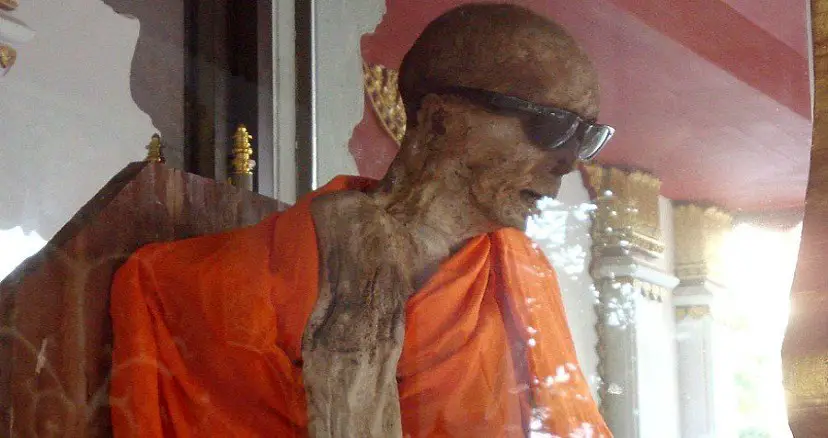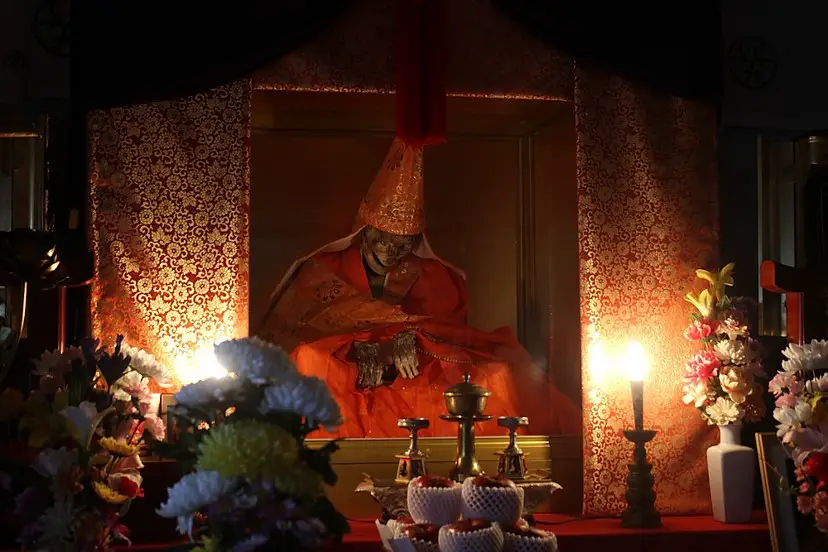 pecific to Buddhist monks in the Japanese Shingon sect, the self-mummification process was aimed at enlightenment. Despite the fact that Japan does not offer the most suitable environment for mummification, about 20 monks have managed, through complex procedures, to turn into mummies. The esoteric Shingon sect combines elements of Buddhism, Shintoism, Taoism and other religions. They practice Shugendo, a philosophy based on gaining spiritual power through discipline and self-denial.
pecific to Buddhist monks in the Japanese Shingon sect, the self-mummification process was aimed at enlightenment. Despite the fact that Japan does not offer the most suitable environment for mummification, about 20 monks have managed, through complex procedures, to turn into mummies. The esoteric Shingon sect combines elements of Buddhism, Shintoism, Taoism and other religions. They practice Shugendo, a philosophy based on gaining spiritual power through discipline and self-denial.
Creator of the process
The founder of this sect was the Japanese monk Kukai (774–835 AD) Towards the end of his life, Kukai entered a state of deep meditation and rejected food and water, which led to his death. voluntary. His body was buried on Mount Koya in Wakayama Prefecture. Those who opened his grave were amazed because Kukai, known post-mortem as Kobo-Daishi, seemed to be sleeping. His appearance was unchanged, and his hair was healthy and strong.
The process of self-mummification, sokushinbutsu, was very complex. Carried out in three stages of 1000 days each, the process was not always a successful one. Because it was considered a barbaric and anachronistic practice, self-mummification was outlawed in the late 19th century. That didn’t stop the monks from trying to turn into mummies.

The oldest sokushinbutsu monk was Shinnyokai. In 1783, at the age of 96, he managed to successfully go through the whole process, remaining to this day in very good condition. It is changed every six years, unlike other mummies, whose clothes are changed every 12 years. The former garments are cut into very small pieces, which are sold as amulets for 1,000 yen.
The process itself
The first stage of the self-mummification process was to give up most foods. The monks ate, for a period of 1000 days, only seeds and nuts. To get rid of any traces of body fat, they performed a series of exhausting exercises.
The second stage was even more difficult. The monks also gave up water. They were allowed to drink only a very toxic tea — Urushi essence tea (generally used to make varnishes and paints). The purpose of this tea was to make the monks lose all body fluids, but also to poison their tissues to prevent worms and beetles from attacking their bodies after death. At this stage, the seeds and nuts were replaced with tree bark and roots.
The last stage lasted until death. Placed in the lotus position, they were locked in a stone tomb. Every day, the monk rang a bell to announce that he was still alive. When the sound stopped, the tomb was sealed for another 1,000 days. If the monk’s body was in good condition, the process was considered a success. Unfortunately, this happens very rarely.
Avid Writer with invaluable knowledge of Humanity!
Upcoming historian with over 30 million views online.
“You make your own life.”





